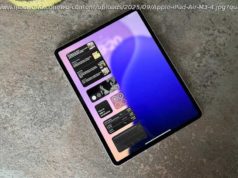Does Apple’s HomePod have enough new features to compete against Amazon Echo and Google Home?
Apple concluded its Worldwide Developers Conference keynote on Monday with a sneak peek of an all-new product: The HomePod.
Originally rumored to be called Siri Speaker, the HomePod is a smart speaker with Wi-Fi capabilities intended to compete against Amazon Echo devices and Google Home—although it will be significantly more expensive. During the WWDC keynote, Apple’s senior VP of marketing Phil Schiller boasted about the HomePod’s audio quality, its built-in room sensors, and the integration with Apple Music.
With its always-on voice assistant and ability to control connected devices, the HomePod is very similar to Echo devices and Google Home, but with a few notable differences. Here are the must-know HomePod features and specs that were showcased during WWDC.
The HomePod will be available starting in December, initially in the U. S., the U. K., and Australia. It will then be available in other countries starting in 2018. It will cost $349 and will be available in two colors: white and space grey.
The HomePod comes with an A8 fusion chip, the same one that powers the iPhone 6 and 6 Plus. That definitely puts it up at the top when it comes to “smart” speakers. Like the AirPods (which sport an A1 chip) , setting up the HomePod is just as easy and intuitive. All you have to do is hold your iPhone next to the HomePod and it’ ll be ready to start playing music in seconds.
Apple wanted to create a speaker that delivered state-of-the-art sound. The HomePod includes an Apple-designed four-inch woofer for a deeper bass and seven beam-forming tweeters for high frequency acoustics. All of this was designed to “preserve the richness and intent of the original recordings.” Of course, we won’ t be able to vouch for this until we get to listen to it later this year.
The HomePod has six microphones so that it can be activated verbally using the “Hey Siri” voice command. You can ask Siri to send a text message to your friend, start playing the latest episode of your favorite podcast, and get the latest updates in news, sports, traffic, and weather. You can also use voice commands to set alarms, timers, and reminders. In addition, Siri on the HomePod can help you answer some of your most burning questions like, “What’s the best Korean barbecue restaurant nearby?” or “Did the Warriors win last night?”
The HomePod can also be used to control HomeKit-enabled devices. So, you can ask Siri to turn on the lights, close the shades, or activate a scene that you’ ve pre-set in the Home app. HomePod can even control these devices when you’ re not home via the Home app, giving you the power to remotely control your devices from anywhere.
Not every room is the same, so the HomePod has learned about spatial awareness. Its built-in sensors can determine the size and layout of its surroundings to automatically deliver the volume and acoustic output that best fills the room. You can also pair two HomePods so they can sense each other and complement the sound.
It’s no surprise that HomePod is deeply tied to Apple Music, which costs $10 a month. If you’ re an Apple Music member, the HomePod can access Apple Music’s full catalog, as well as tap into machine learning to learn about your music preferences and suggest songs and artists you might like. Apple refers to the HomePod as the perfect musicologist. In addition, you can create a shared Up Next queue with other nearby iOS devices (using the new AirPlay 2 support) so that everyone in the house can participate in picking music.
Privacy is also being touted as a vital component of the HomePod. According to Apple, the smart speaker will only start collecting information after the “Hey Siri” voice command is activated. This means that you shouldn’ t be afraid that the HomePod is secretly recording your conversations in order to sell you stuff. All information is recorded locally on the device and sent to Apple servers encrypted using an anonymous Siri identifier.






